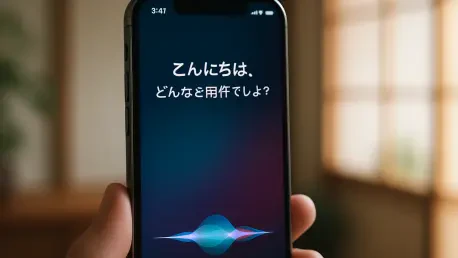In a groundbreaking move that has captured the attention of tech enthusiasts across the globe, Apple has introduced a feature with the iOS 26.2 update that allows iPhone users in Japan to swap out Siri for third-party voice assistants like Alexa or Gemini. This development marks a significant departure from Apple’s traditionally closed ecosystem, offering a glimpse into a future where user customization takes center stage. For years, Siri has been the default voice assistant on iPhones, deeply integrated into the user experience. Now, with a simple long-press of the Side Button, Japanese users can activate an alternative assistant, signaling a shift driven by both regulatory pressures and a growing demand for flexibility. This update not only reshapes how users interact with their devices but also raises questions about the potential for similar changes in other regions. As Apple navigates this new terrain, the implications of this feature extend far beyond a single market, hinting at broader transformations in mobile technology.
Breaking New Ground with Voice Assistant Options
A Leap Toward Customization in Japan
The iOS 26.2 update brings an unprecedented level of personalization for iPhone users in Japan, allowing them to bypass Siri and select a third-party voice assistant as their primary interaction tool. By long-pressing the Side Button, users can instantly activate alternatives like Alexa or Gemini, thanks to the innovative App Intents framework that enables developers to integrate their apps for seamless use. This feature caters to individual preferences, recognizing that not all users resonate with Siri’s functionality or voice. It represents a pivotal moment in Apple’s history, as the company has long maintained tight control over default apps and services. While this change empowers users with choice, it also depends heavily on whether developers fully support the integration. The potential for a more tailored user experience is clear, yet the success of this feature hinges on the willingness of third-party providers to optimize their assistants for Apple’s ecosystem, creating a dynamic interplay between innovation and collaboration.
Challenges of Developer Dependency and Adoption
While the ability to replace Siri offers exciting possibilities for Japanese iPhone users, the feature’s effectiveness is not without hurdles, particularly regarding developer support. The functionality requires third-party assistants to initiate an audio session, a technical requirement that may not be universally met across all apps at launch. This dependency could result in uneven experiences, where some assistants integrate smoothly while others lag or fail to activate as intended. Additionally, the onus falls on developers to update their apps to align with Apple’s framework, a process that may take time and resources. For users, this could mean a delay in accessing their preferred assistant or encountering compatibility issues. Apple has laid the groundwork for customization, but the real-world impact will depend on how quickly and effectively developers respond. As the tech community watches this rollout, the balance between user choice and technical execution remains a critical factor in determining the long-term value of this update.
Regional Exclusivity and Future Implications
Why Japan Leads the Way
The decision to roll out the voice assistant replacement feature exclusively in Japan stems from specific regulatory pressures under the Mobile Software Competition Act, which emphasizes consumer choice and competition in mobile technology. Apple’s compliance with this legislation is evident not only in the ability to switch from Siri but also in additional Japan-specific updates, such as support for third-party app stores and a search engine choice screen in Safari. This strategic focus on Japan reflects a broader trend of tech giants adapting to local laws, using the region as a testing ground for features that could later expand globally. For Japanese users, this means early access to a more open ecosystem, positioning them at the forefront of Apple’s evolving approach. However, the geographic limitation raises questions about equity in user experience across different markets, as others remain tied to Siri without similar options for customization, at least for now.
Global Aspirations and User Feedback
As Japanese iPhone users embrace the flexibility of choosing their voice assistant, the global Apple community is left wondering if and when this feature might reach other regions. Speculation points to the European Union as a likely next candidate, given similar regulatory pushes for competition and user autonomy in mobile ecosystems. Community feedback, gathered from various online forums, reveals a generally positive reception to the added control in Japan, with many users appreciating the shift toward personalization. However, concerns persist about the feature’s restricted availability and the uncertainty of developer support for lesser-known assistants. Some express hope that Apple will prioritize a wider rollout, while others caution that technical and legal barriers could delay such plans. This diversity of perspectives underscores a broader tension between innovation and accessibility, as Apple navigates the challenge of balancing regional compliance with global user expectations. The path forward remains unclear, but the conversation around this update continues to grow.
Reflecting on a Milestone Update
Lessons from Japan’s Unique Rollout
Looking back, the iOS 26.2 update carved a notable chapter in Apple’s history by granting Japanese users the ability to replace Siri with third-party voice assistants through a simple gesture on the Side Button. This move, driven by local regulations, showcased how tailored adaptations could redefine user interaction within a tightly controlled ecosystem. The feature’s introduction highlighted Apple’s capacity to pivot in response to market-specific demands, offering a blueprint for addressing similar pressures elsewhere. While it empowered users in Japan with newfound choice, the update also exposed the complexities of implementing such changes, from geographic exclusivity to reliance on developer participation. Reflecting on this rollout, it became evident that balancing innovation with practical execution posed a significant challenge, yet it also opened doors to rethinking how voice assistants fit into daily device use. The lessons learned in Japan provided valuable insights into the intricacies of customization on a global scale.
Paving the Way for Broader Change
As the dust settled on the iOS 26.2 update, the focus shifted to actionable steps for expanding user choice beyond Japan’s borders. Apple’s experience in this market demonstrated the potential for regulatory-driven features to enhance personalization, suggesting that similar frameworks could be adapted elsewhere if legal landscapes align. For developers, the update served as a call to action to prioritize integration with Apple’s systems, ensuring that third-party assistants could compete effectively with Siri. Meanwhile, users worldwide could anticipate future updates by staying informed about regulatory shifts in their regions, as such changes often precede technological advancements. Apple, on its part, faced the task of evaluating feedback from Japan to refine this feature for broader deployment, potentially addressing technical limitations and geographic barriers. This update, though limited in scope, laid the groundwork for a more competitive and user-centric mobile experience, signaling a gradual but impactful shift in how technology giants approach customization.









